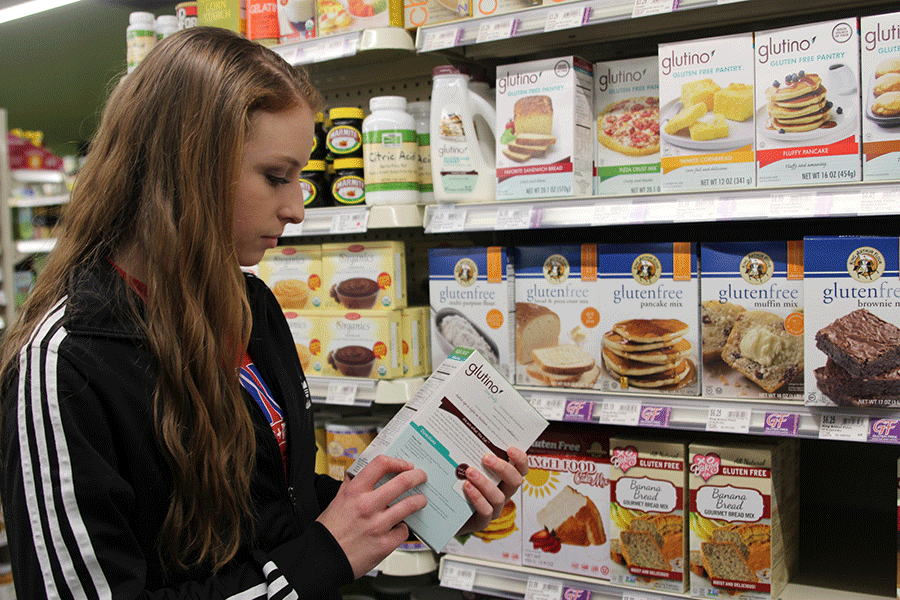Students struggle to be gluten-free
Gluten-free diets cause and solve problems for students and teachers
Junior Ellie Wilson shops at Natural Grocers for gluten free cake mix on Friday, Jan. 30.
February 4, 2015
When people eat out, they usually do so to not have to worry about food preparation. For people with gluten intolerance like junior Ellie Wilson, dining out can be more trouble than it’s worth.
“I don’t eat out as much as I used to just because it’s kind of hard [to find something to eat] at some places,” Wilson said.
Gluten is a collective term given to the proteins found in wheat. Gluten intolerance is a term given to any adverse reaction to gluten, including celiac disease. Ingesting gluten can lead to symptoms including digestive problems, pain in the abdomen, bloating and fatigue.
Junior Katie Burke learned she had celiac disease, a disease where gluten causes damage to the small intestine’s lining, two years ago. This disease affects around 1 percent of the U.S. population according to the Celiac Disease Foundation.
Burke realized something was wrong when she started passing out.
“We went to a bunch of doctors and they couldn’t figure it out,” Burke said. “Then I got allergy tested and the doctor [said I] tested higher than [he had] ever seen for a gluten allergy.”
Sophomore Hunter Paxton learned of his gluten intolerance while getting an X-ray for a hamstring injury.
“[My intolerance] was severe,” Paxton said. “Eventually, if I didn’t change my diet, I would get really sick and have to go to the hospital.”
Unlike those with gluten intolerance, social studies teacher Jack Johnson chose to become gluten free after his son experienced health problems. According to the NDP group, a consumer research firm, 30 percent of adults in the U.S. wish to start a gluten-free diet.
“[My son] had problems with his digestive system and so … our dietitian said to try a gluten-free diet,” Johnson said. “We noticed that a lot of people sold gluten-free products and so we decided as a family, we’ll go gluten free.”
For Burke, these gluten-free products come at a cost.
“It’s really expensive. We buy a lot of our food at Whole Foods,” Burke said. “Price Chopper has done a really good job adding more gluten-free food.”
Despite the addition of gluten-free products in local grocery stores, Wilson still chooses to go to organic grocery stores.
“Eating healthy in general is just more expensive,” Wilson said. “We go to Whole Foods or Natural Grocers.”
Johnson has had to become more accustomed with finding alternative food options.
“There is just so much that I’m so used to eating that I couldn’t eat anymore,” Johnson said. “We have really replaced those … usual sides of bread with vegetables.”
As Burke has become more accustomed with her different diet, it has grown into a normal aspect of her life.
“When I first found out, it was so hard, it was the hardest thing ever,” Burke said. “Now it’s becoming a lot easier the older I get.”









